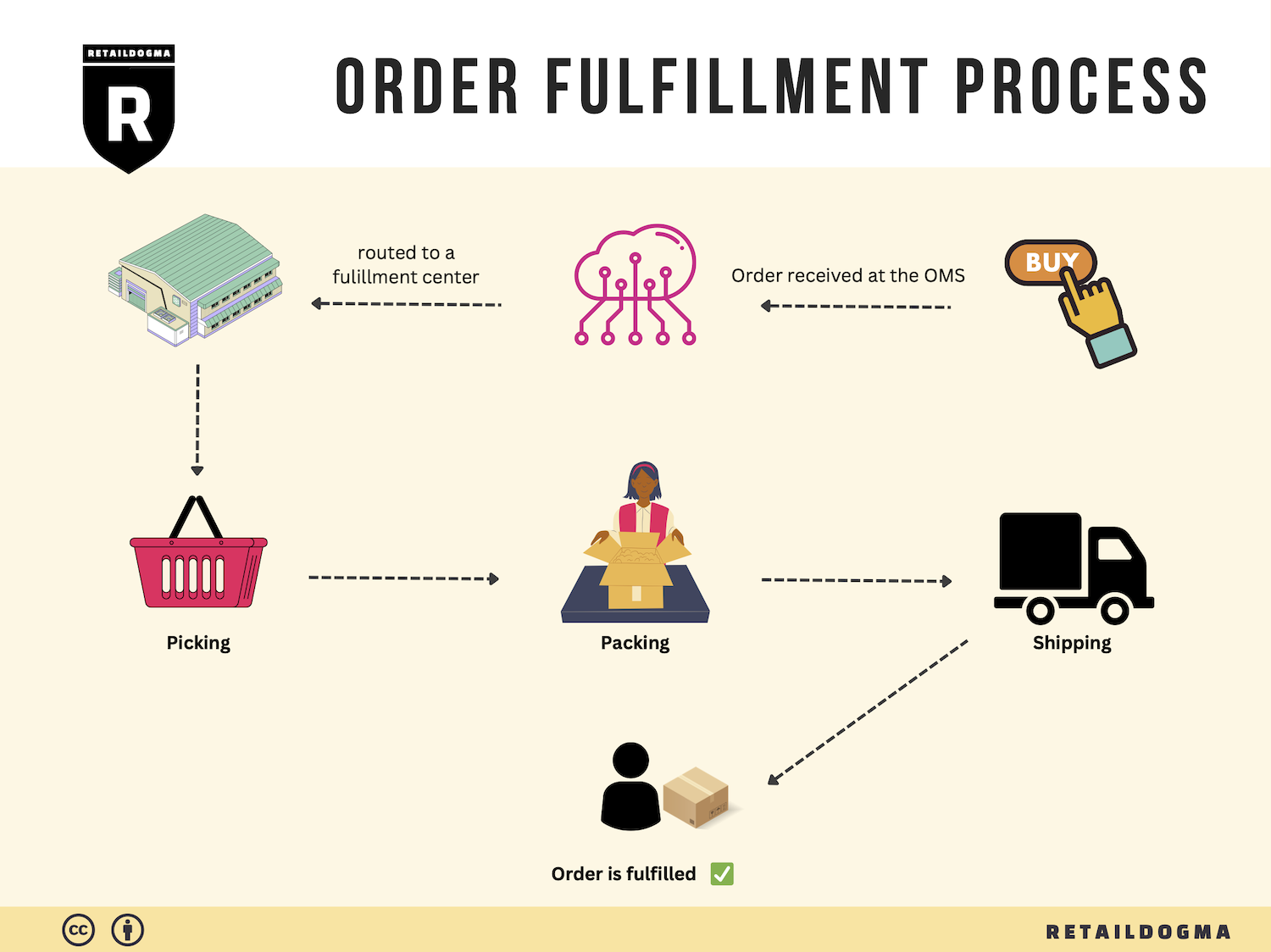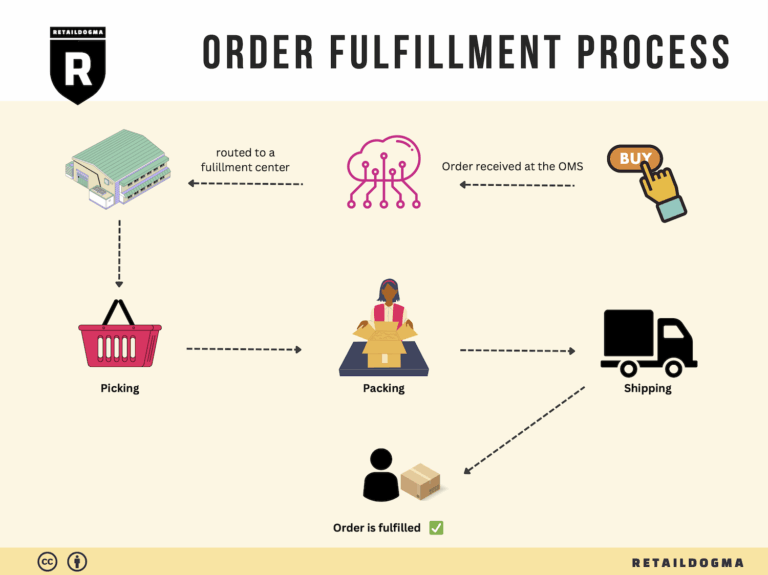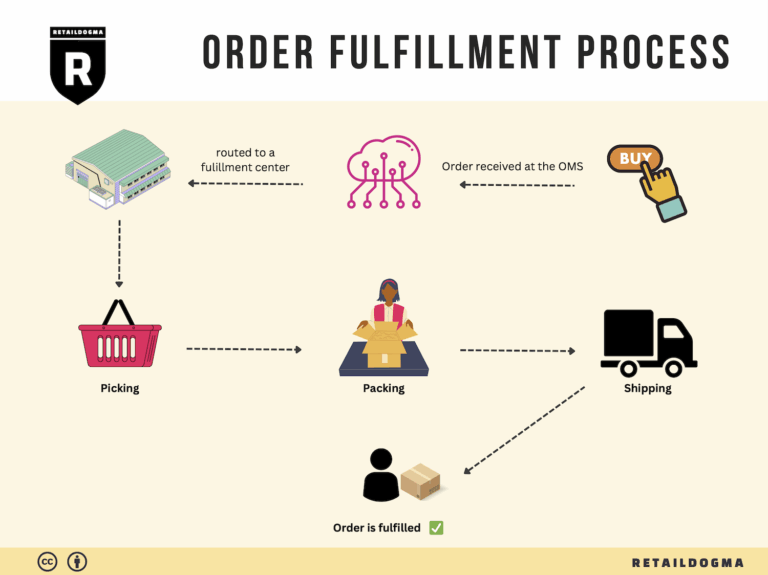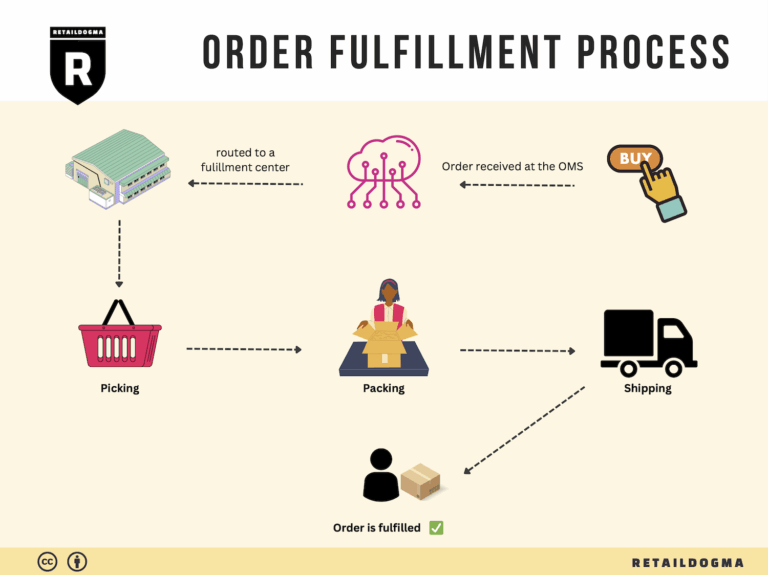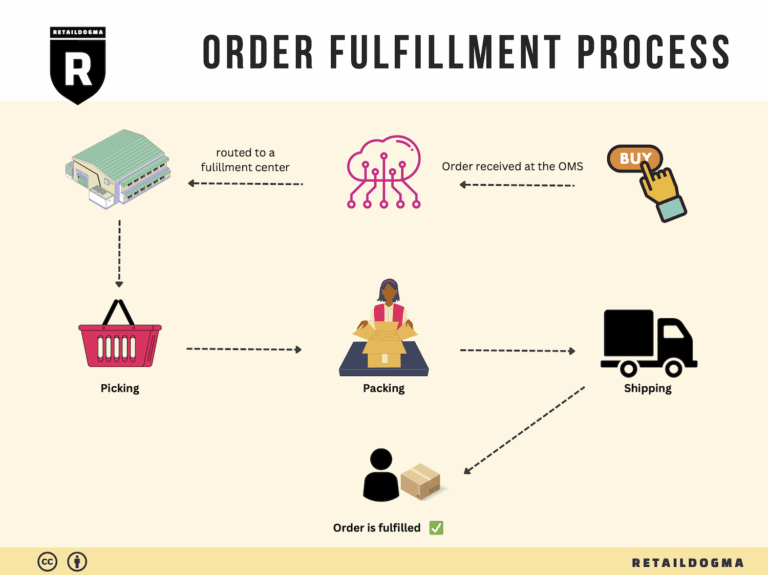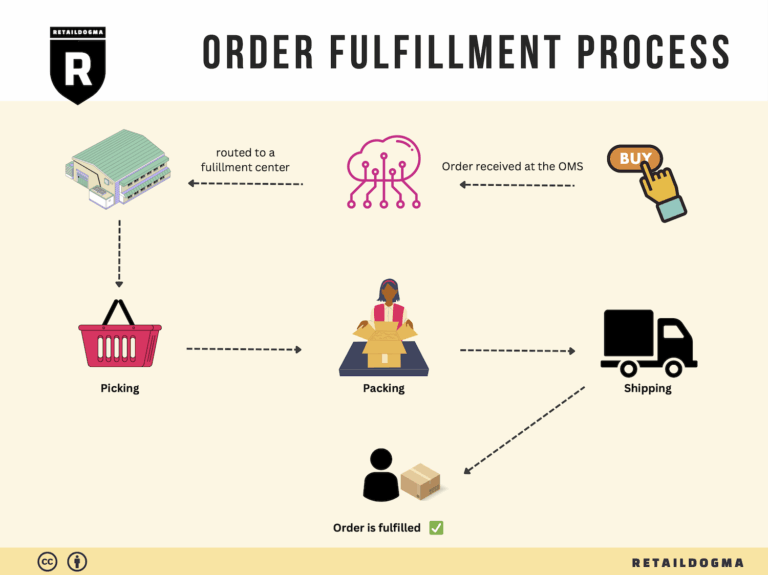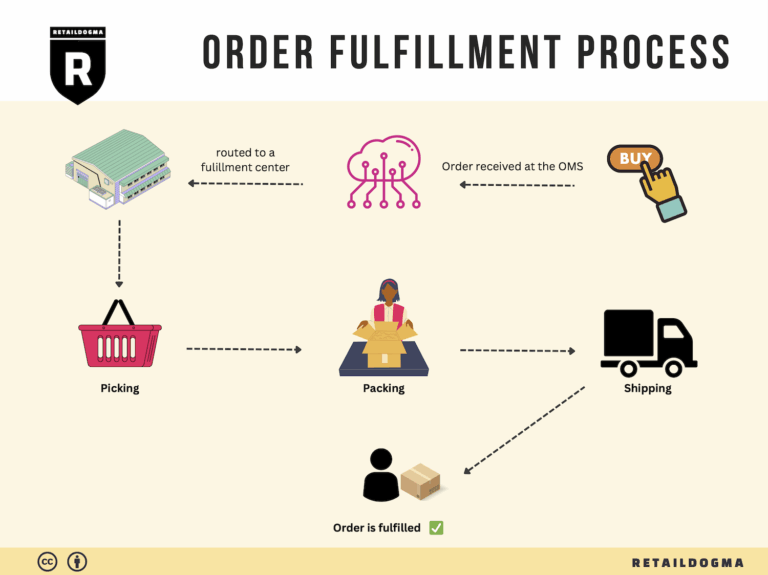Ecommerce Fulfillment Services: The Ultimate Guide (2025)
What is E-commerce Fulfillment? An Introduction for Growing Businesses
Understanding E-commerce Fulfillment
As your e-commerce business begins to grow, the excitement of increased sales can quickly turn into a daunting challenge—especially when it comes to packing and shipping orders. Many online business owners find themselves overwhelmed by the logistics of fulfillment: from sorting inventory and picking products to packaging and ensuring timely delivery. This is where effective e-commerce fulfillment becomes crucial.
In its simplest form, fulfillment is the process of getting a product from your inventory into the hands of your customer. It encompasses everything from warehousing to shipping, and it plays a vital role in customer satisfaction. A well-structured fulfillment strategy not only streamlines operations but also enhances the overall shopping experience, which is essential for retaining customers and building brand loyalty.
This guide aims to demystify the e-commerce fulfillment landscape for growing businesses by covering several key areas:
-
Fulfillment Models: We’ll explore different fulfillment options, including traditional warehousing, Third-Party Logistics (3PL), and Fulfillment by Amazon (FBA). Each model has its own set of advantages and challenges, and understanding these can help you choose the right fit for your business.
-
Core Services: We’ll outline the essential services that a fulfillment partner typically offers, such as inventory management, order processing, and shipping. This will help you identify which services are critical for your operation and what to look for in a partner.
-
Choosing a Partner: Selecting the right fulfillment partner is crucial. We’ll provide practical tips on how to evaluate potential partners based on their capabilities, technology, and customer service.
-
Pricing Considerations: Finally, we’ll break down the various cost structures associated with fulfillment services, including storage fees, shipping rates, and additional charges. Understanding these costs will empower you to make informed financial decisions as you scale.
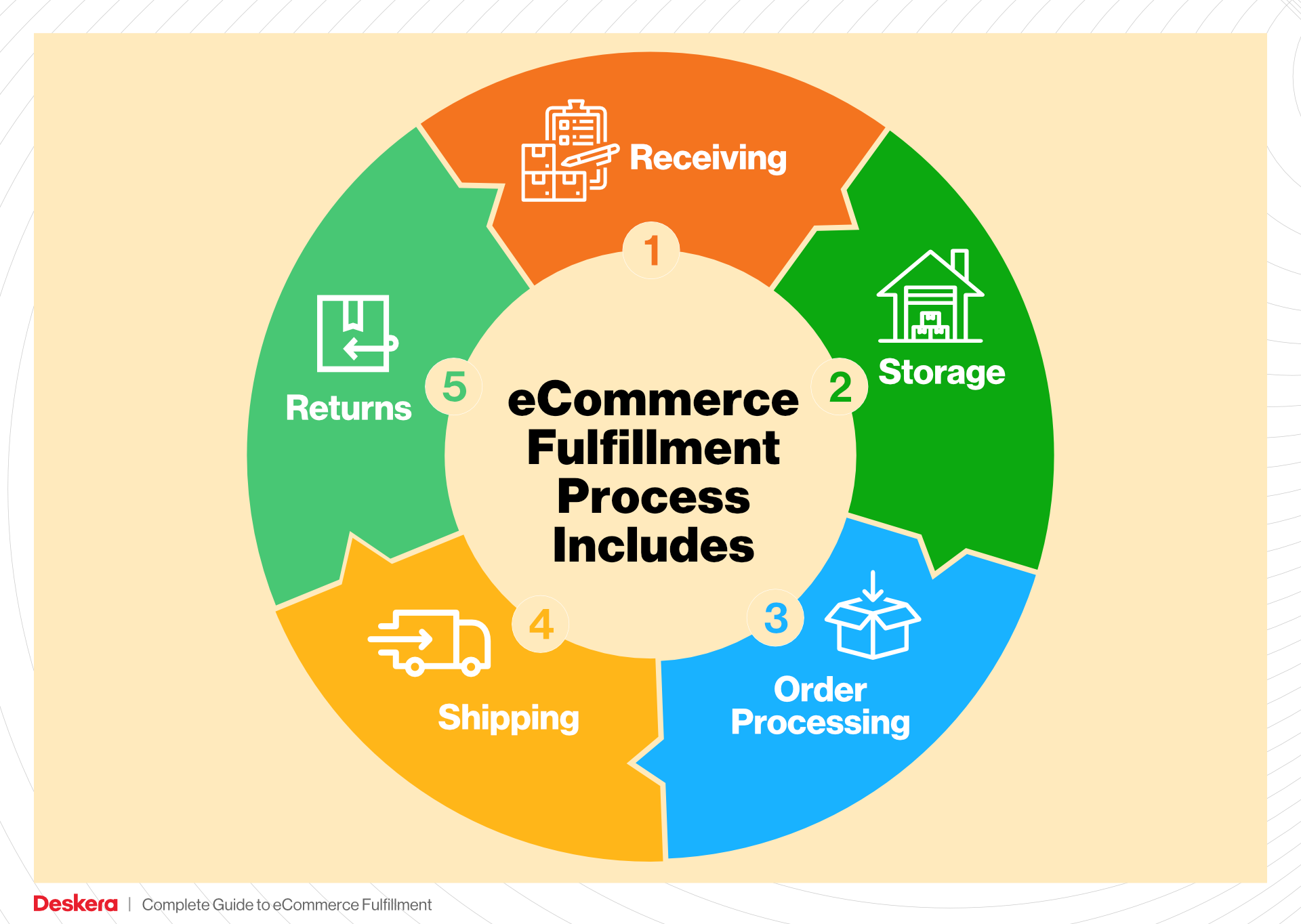
The ultimate goal of this guide is to equip you with the knowledge and insights needed to make smart decisions about your logistics. By mastering the fulfillment process, you can focus on what you do best—growing your business—while ensuring that your customers receive their orders quickly and efficiently. Whether you’re just starting out or looking to optimize your existing operations, this comprehensive guide will serve as your roadmap to successful e-commerce fulfillment.
What You’ll Learn In This Guide
- What is E-commerce Fulfillment? An Introduction for Growing Businesses
- The Order Fulfillment Process: From ‘Buy’ Button to Customer’s Door
- Comparing Fulfillment Models: In-House vs. 3PL vs. Dropshipping
- A Deep Dive into Amazon FBA: Pros, Cons, and Who It’s For
- Core Services Offered by Fulfillment Centers
- How to Choose a Fulfillment Partner: A 6-Point Checklist
- Understanding Fulfillment Pricing: A Breakdown of Common Fees
- Frequently Asked Questions (FAQs) about Fulfillment
- Conclusion: Is Outsourcing Fulfillment the Right Move for Your Business?
- Important Disclaimer
The Order Fulfillment Process: From ‘Buy’ Button to Customer’s Door
1. Receiving Inventory
The order fulfillment process begins with receiving inventory at the fulfillment center. This step involves accepting shipments from suppliers, inspecting them for quality and accuracy, and entering the products into the warehouse management system (WMS). Each item is typically assigned a Stock Keeping Unit (SKU), which is a unique identifier that helps in tracking the product throughout the fulfillment process.
This step is crucial because it ensures that the right products are available for order fulfillment. Any discrepancies during receiving can lead to inventory shortages or errors that affect customer satisfaction. Maintaining an accurate inventory count from the outset is essential for smooth operations and meeting customer expectations.
2. Warehouse Storage
Once the inventory is received and recorded, it is then stored in designated locations within the fulfillment center. This involves strategically placing products in bins or shelves based on their SKU, size, and demand frequency. Effective warehouse storage utilizes techniques such as ABC analysis, where items are categorized based on their sales volume, to optimize space and accessibility.
Proper storage is vital because it directly impacts the efficiency of subsequent steps in the fulfillment process. An organized warehouse facilitates faster order picking and minimizes the time employees spend searching for items. This efficiency ultimately translates into quicker delivery times, enhancing customer satisfaction and retention.
3. Order Picking
When a customer places an order, the next step is order picking. This process involves retrieving the specific items from their storage locations based on the order details. Pick lists, which are generated by the WMS, guide warehouse staff in efficiently locating and collecting the items needed for each order.
Order picking is significant because it is often the most labor-intensive part of the fulfillment process. The accuracy and speed of picking directly influence order fulfillment times and customer satisfaction. Implementing technologies such as pick-to-light systems or mobile scanning devices can enhance accuracy and productivity, reducing the likelihood of errors and returns.
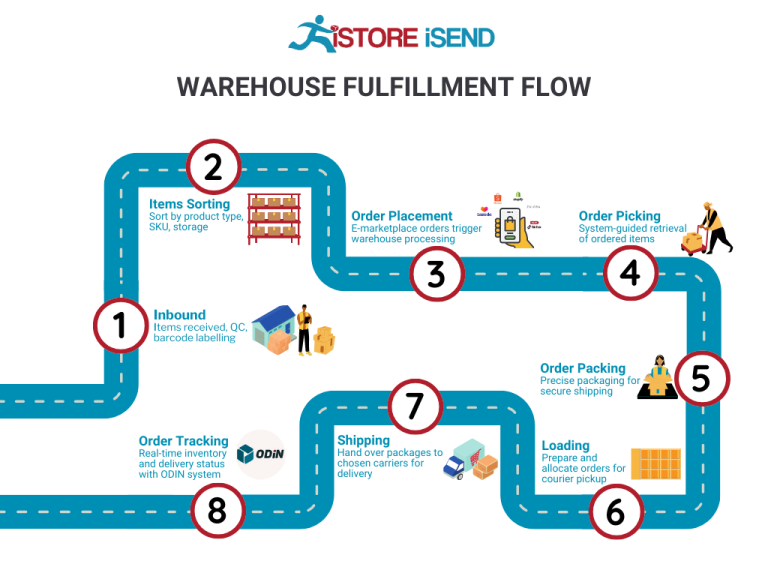
4. Order Packing
After items are picked, they move to the packing stage. Here, the products are carefully packed into boxes or envelopes, ensuring they are secure and protected during transit. This step also involves labeling packages with shipping information, which may include tracking numbers and customer details.
The packing process is important for several reasons. First, it prevents damage to the items during shipping, which is essential for maintaining customer satisfaction. Second, efficient packing can reduce shipping costs by minimizing package size and weight. Utilizing packing slips and ensuring accurate labeling are key practices that streamline this step and enhance the overall customer experience.
5. Shipping & Delivery
The final step in the order fulfillment process is shipping and delivery. Once the packages are packed, they are handed over to shipping carriers for transport to the customer’s address. This involves selecting the appropriate shipping method based on factors such as delivery speed, cost, and destination.
Shipping and delivery are critical because they represent the last touchpoint between the business and the customer. Timely and accurate delivery can significantly impact customer satisfaction and loyalty. Employing tracking systems allows customers to monitor their shipment status, further enhancing the customer experience. Understanding shipping logistics and carrier options is essential for e-commerce businesses aiming to scale effectively while maintaining competitive delivery times.
Conclusion
Understanding and optimizing each step of the order fulfillment process is vital for e-commerce businesses looking to scale. From receiving inventory to shipping and delivery, each phase plays a crucial role in meeting customer expectations and enhancing operational efficiency. By implementing best practices and leveraging technology, businesses can streamline their fulfillment operations, ultimately leading to increased customer satisfaction and business growth.
Comparing Fulfillment Models: In-House vs. 3PL vs. Dropshipping
Fulfillment Models Overview
Understanding the various fulfillment models available is crucial for e-commerce business owners and operations managers seeking to scale their logistics effectively. The choice between In-House Fulfillment, Third-Party Logistics (3PL), and Dropshipping can significantly impact operational efficiency, cost management, and customer satisfaction. Below is a comparative table that outlines the key characteristics of each model.
| Model | Who Handles Inventory | Best For (Business Stage) | Key Advantage | Key Disadvantage |
|---|---|---|---|---|
| In-House Fulfillment | Business owns inventory | Established or growing businesses | Full control over inventory and shipping | High overhead costs and labor demands |
| Third-Party Logistics (3PL) | 3PL provider handles inventory | Startups and mid-sized businesses | Scalability and expertise in logistics | Less control over inventory and processes |
| Dropshipping | Supplier handles inventory | New or small businesses | Low upfront investment and risk | Lower profit margins and dependency on suppliers |
In-House Fulfillment
In-House Fulfillment refers to the process where a business manages its own inventory and shipping operations directly. This model is often adopted by established or growing businesses that have sufficient resources to invest in warehousing, staff, and logistics systems.
Key Advantages: The primary benefit of in-house fulfillment is the full control it provides over inventory management, order processing, and shipping. Businesses can customize their fulfillment processes to align closely with their brand’s values and customer expectations. This level of control allows for greater accuracy in inventory tracking, faster response times to customer inquiries, and the ability to implement quality assurance measures.
Key Disadvantages: However, this model also comes with significant drawbacks. The overhead costs associated with maintaining a warehouse, hiring staff, and investing in technology can be substantial. Additionally, managing logistics in-house requires expertise and can divert focus away from core business activities such as marketing and product development. As a business scales, these operational demands can become overwhelming.
Third-Party Logistics (3PL)
Third-Party Logistics (3PL) involves outsourcing logistics operations to a specialized provider. In this model, the 3PL company manages inventory, warehousing, and shipping on behalf of the business. This model is particularly beneficial for startups and mid-sized businesses that may not have the resources or expertise to handle logistics internally.
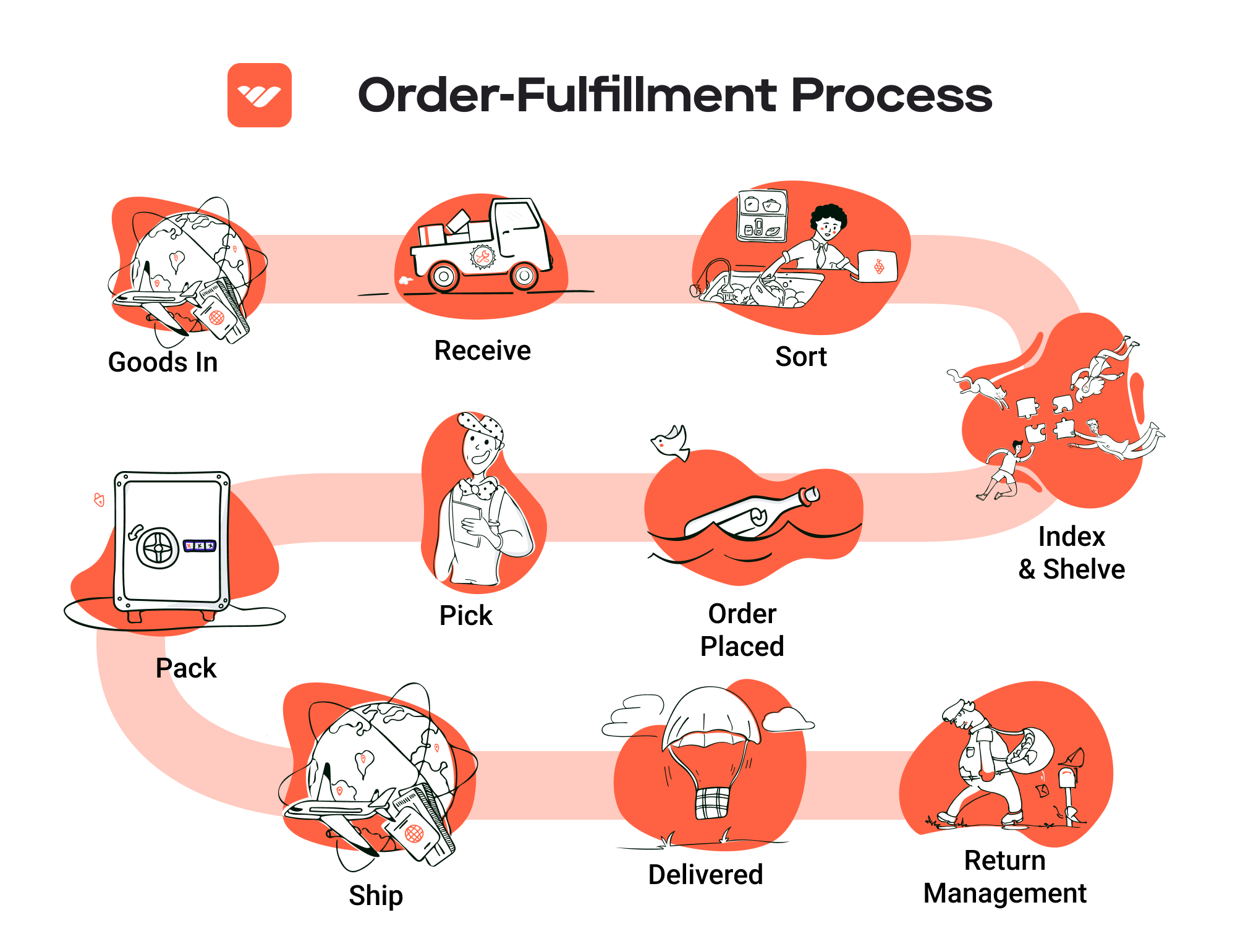
Key Advantages: The main advantage of using a 3PL provider is scalability. As your business grows, a 3PL can quickly adapt to increased demand without the need for significant capital investment. Moreover, 3PLs often have established logistics networks and expertise, which can enhance delivery speed and efficiency. This allows businesses to focus on their core competencies while leveraging the logistics expertise of the provider.
Key Disadvantages: The downside is that businesses relinquish some control over their inventory and fulfillment processes. This can lead to challenges in communication and coordination, particularly if the 3PL does not align with the business’s service standards. Additionally, there may be hidden fees associated with 3PL services that can impact profit margins.
Dropshipping
Dropshipping is a fulfillment method where the retailer does not keep goods in stock. Instead, when a customer places an order, the retailer purchases the item from a third party, usually a wholesaler or manufacturer, who then ships it directly to the customer. This model is particularly appealing for new or small businesses looking to minimize risk and upfront investment.
Key Advantages: The primary benefit of dropshipping is the low barrier to entry. Retailers do not need to invest in inventory upfront, which significantly reduces financial risk. This model also allows businesses to offer a wide range of products without the need for storage space. Since the supplier handles inventory and shipping, entrepreneurs can focus on marketing and customer service.
Key Disadvantages: However, dropshipping comes with its own set of challenges. Profit margins can be lower compared to other fulfillment models due to the fees charged by suppliers. Additionally, retailers have less control over inventory levels and shipping times, which can lead to customer dissatisfaction if a product is out of stock or delayed in shipping. Dependency on suppliers for product quality and fulfillment can also pose risks to the retailer’s reputation.
Conclusion
Choosing the right fulfillment model is a strategic decision that can shape the future of an e-commerce business. In-House Fulfillment offers control but at a higher cost, while 3PL provides scalability and expertise with some loss of control. Dropshipping minimizes risk and investment, but it may result in lower profit margins and potential quality issues. Understanding these models and their implications is essential for e-commerce business owners and operations managers looking to optimize their logistics and scale effectively.
A Deep Dive into Amazon FBA: Pros, Cons, and Who It’s For
What is Fulfillment by Amazon (FBA)?
Fulfillment by Amazon (FBA) is a service that allows e-commerce sellers to store their products in Amazon’s fulfillment centers. Amazon then takes care of storage, packaging, and shipping of the products to customers. This service enables sellers to leverage Amazon’s extensive logistics network, allowing for faster and more efficient order fulfillment. When a customer places an order for a product that is fulfilled by Amazon, the company handles all aspects of the transaction, including customer service and returns.
The FBA process generally involves several steps:
-
Inventory Preparation: Sellers must prepare their products according to Amazon’s guidelines, including labeling and packaging requirements.
-
Shipping to Fulfillment Centers: Once prepared, sellers ship their inventory to designated Amazon fulfillment centers. For instance, the Amazon Fulfillment Center Ama1 in Amarillo, TX, is equipped to handle high volumes of inventory and streamline the fulfillment process.
-
Storage: Amazon stores the inventory in its warehouses until an order is placed. The storage capabilities are designed to accommodate various product sizes and types.
-
Order Processing: When a customer places an order, Amazon picks, packs, and ships the product directly to the customer. This process is supported by advanced technology and logistics systems, ensuring accuracy and speed.
-
Customer Service: Amazon also handles customer inquiries and returns, providing a seamless experience for both sellers and buyers.
Pros of Fulfillment by Amazon (FBA)
1. Prime Eligibility
One of the most significant advantages of using FBA is that products become eligible for Amazon Prime. This means that Prime members can benefit from fast, free shipping, which can significantly boost sales and visibility. Prime members are more likely to purchase products that are eligible for this service, making it a vital factor for increasing sales.
2. Customer Trust
Amazon has built a strong reputation for reliability and customer service. By utilizing FBA, sellers can leverage this trust, as customers are often more inclined to purchase from sellers whose products are fulfilled by Amazon. The FBA logo on product listings signals to customers that they can expect high-quality service and support.
3. Multi-Channel Fulfillment
FBA is not limited to sales made on Amazon alone. Sellers can also use FBA to fulfill orders from other channels, such as their own websites or other marketplaces. This multi-channel fulfillment capability enables businesses to streamline their logistics while maximizing their reach across various sales platforms.
4. Automated Logistics
Using FBA means that sellers can offload the complexities of storage, shipping, and customer service to Amazon. This allows business owners to focus on other critical aspects of their operations, such as marketing and product development.
5. Scalability
FBA allows sellers to scale their businesses efficiently. As order volumes increase, Amazon can handle the additional logistics without requiring sellers to invest in their own warehousing and fulfillment infrastructure.
Cons of Fulfillment by Amazon (FBA)
1. High Fees
While FBA offers many benefits, it comes at a cost. Sellers are subject to various fees, including storage fees and fulfillment fees. These fees can add up, particularly for sellers with low-margin products or those with slow-moving inventory. It’s crucial for sellers to understand these costs and incorporate them into their pricing strategy.
2. Strict Inventory Rules
Amazon has stringent inventory management policies, including rules regarding product labeling, packaging, and even inventory age. Non-compliance can lead to additional fees or even the removal of products from the platform. Sellers need to be diligent in managing their inventory to avoid penalties.
3. Commingling Risks
FBA involves a practice called commingling, where Amazon pools inventory from different sellers to streamline shipping. While this can enhance efficiency, it also poses risks. If a customer returns a product, there’s a chance it may not be the exact item that was sent, leading to potential issues with quality control and customer satisfaction.
4. Limited Control Over Fulfillment
Sellers give up a degree of control over the fulfillment process. While Amazon handles logistics, sellers may have limited visibility into the specifics of how their products are stored and shipped. This lack of control can be concerning for sellers who prioritize brand integrity and customer experience.
5. Dependency on Amazon
Using FBA can create a dependency on Amazon’s platform, making it challenging for sellers to diversify their sales channels. If policies change or competition increases, sellers may find themselves vulnerable to shifts in Amazon’s ecosystem.
Who is FBA Best For?
FBA is particularly advantageous for:
-
Small to Medium-Sized Sellers: Businesses that do not have the resources to manage their own warehousing and fulfillment can greatly benefit from FBA’s services.
-
Brands with High Sales Volumes: Sellers with fast-moving products that can take advantage of Prime shipping will likely see a significant return on investment.
-
E-commerce Entrepreneurs: New entrepreneurs looking to enter the market with minimal upfront investment in logistics will find FBA an appealing option.
-
Multi-Channel Sellers: Businesses that sell on multiple platforms can streamline their operations through FBA, allowing them to fulfill orders from various sources efficiently.
In conclusion, while Fulfillment by Amazon offers compelling benefits that can greatly enhance an e-commerce business’s operational efficiency and market reach, it also comes with challenges that sellers must carefully navigate. Understanding both the pros and cons will help business owners make informed decisions about whether FBA is the right fit for their growth strategy.
Core Services Offered by Fulfillment Centers
Inventory Management & Warehousing
Inventory management and warehousing are foundational services provided by fulfillment centers, critical for the efficiency and effectiveness of e-commerce operations. Fulfillment centers utilize advanced inventory management systems that track stock levels, manage replenishment, and optimize storage. By maintaining real-time visibility of inventory, businesses can make informed decisions about stock levels, preventing both overstock and stockouts.
The benefits of effective inventory management are manifold. Firstly, it enhances operational efficiency by reducing the time spent on manual inventory checks and allowing for automated reorder processes. This leads to better cash flow management, as funds are not tied up in excess inventory. Additionally, accurate inventory data helps in forecasting demand, enabling businesses to prepare for peak seasons or promotional events without the risk of disappointing customers due to stock unavailability. In essence, a well-managed warehouse translates to improved customer satisfaction and loyalty.
Pick and Pack Services
Pick and pack services are essential for fulfilling customer orders accurately and efficiently. This process involves selecting the correct items from the warehouse and packing them securely for shipment. Fulfillment centers employ sophisticated picking technologies, such as barcode scanners and automated picking systems, to streamline this process. Once the items are picked, they are packed using appropriate materials to ensure they arrive at the customer’s doorstep in perfect condition.
The primary benefit of pick and pack services lies in their impact on order accuracy and speed. By leveraging technology and experienced staff, fulfillment centers can significantly reduce errors in order fulfillment, which is crucial for maintaining a positive brand reputation. Moreover, quick turnaround times from order placement to shipment enhance customer satisfaction, as buyers increasingly expect fast delivery. Utilizing these services allows e-commerce businesses to scale operations without compromising quality, ultimately leading to increased sales and customer retention.
Kitting and Assembly
Kitting and assembly services involve the grouping of individual products into a single package or kit, which can be particularly beneficial for businesses offering bundled products or promotional items. This service includes the assembly of various components into a final product, ready for distribution. Fulfillment centers often have the capability to customize kits based on specific customer requirements, allowing for personalized marketing strategies.
The benefits of kitting and assembly are significant. By offering pre-assembled kits, businesses can simplify the purchasing process for customers, making it easier for them to buy related items in one transaction. This not only enhances the shopping experience but also increases average order value. Additionally, kitting can streamline logistics by reducing the number of individual SKUs that need to be managed, leading to more efficient inventory control and faster order processing. For e-commerce businesses looking to differentiate themselves in a competitive market, kitting and assembly can be a powerful tool for enhancing product offerings and driving sales.
Returns Management (Reverse Logistics)
Returns management, or reverse logistics, refers to the process of handling product returns efficiently. Fulfillment centers play a crucial role in this process by providing a structured approach to returns, including receiving returned items, inspecting them, restocking, or processing refunds. Effective returns management is essential for maintaining customer satisfaction and loyalty, as a smooth return process can significantly influence a customer’s future purchasing decisions.
The benefits of robust returns management are multifaceted. A well-organized return process reduces the operational burden on e-commerce businesses, allowing them to focus on core activities such as sales and marketing. By efficiently processing returns, fulfillment centers can help businesses recover valuable inventory, minimize losses, and maintain accurate inventory levels. Furthermore, offering a hassle-free return experience can enhance customer trust and brand loyalty, encouraging repeat purchases. In today’s e-commerce landscape, where consumers expect easy returns, a streamlined returns management system can be a competitive advantage.
In conclusion, the core services offered by fulfillment centers, including inventory management and warehousing, pick and pack services, kitting and assembly, and returns management, are essential for e-commerce businesses aiming to scale operations effectively. By leveraging these services, businesses can enhance operational efficiency, improve customer satisfaction, and ultimately drive growth in a competitive market.
How to Choose a Fulfillment Partner: A 6-Point Checklist
Location & Warehouse Network
Importance: The geographical location of your fulfillment partner’s warehouses can significantly impact shipping times, costs, and customer satisfaction. A partner with strategically located facilities can help you reach your customers faster and more efficiently.
Questions to Ask:
– Where are your warehouses located? How does this align with my target market?
– What is your average shipping time to key regions?
– Do you have a network of warehouses that can facilitate last-mile delivery?
Technology & Integrations
Importance: In today’s fast-paced e-commerce environment, robust technology and integration capabilities are essential. A good fulfillment partner should have an advanced warehouse management system (WMS) that integrates seamlessly with your e-commerce platform.
Questions to Ask:
– What technology do you use to manage inventory and orders?
– Can your system integrate with my existing e-commerce platform (e.g., Shopify, WooCommerce, Amazon)?
– How do you handle real-time inventory updates and order tracking?
Specializations (e.g., Cold Storage, Oversized Items)
Importance: Depending on your product range, you may need a fulfillment partner that specializes in certain types of items, such as perishables, oversized products, or hazardous materials. Specialized facilities can ensure that your products are stored and handled correctly.
Questions to Ask:
– Do you have experience handling my type of products?
– What special handling procedures do you have in place for sensitive items?
– Can you accommodate specific storage requirements, such as climate control or oversized items?
Scalability & Capacity
Importance: As your business grows, your fulfillment needs will likely change. It’s crucial to partner with a fulfillment center that can scale operations to meet increased demand without compromising service quality.
Questions to Ask:
– How do you manage seasonal spikes in demand?
– What is your current capacity, and how can it be adjusted if my order volume increases?
– Do you have a plan for scaling operations in response to my growth?
Pricing and Contracts
Importance: Understanding the pricing structure and contractual obligations is vital for budgeting and financial planning. Look for transparency in pricing and ensure there are no hidden fees that could affect your profit margins.
Questions to Ask:
– What is your pricing model (e.g., per order, per item, monthly fee)?
– Are there any additional fees for services such as storage, packing, or returns?
– Can you provide a sample contract, and what are the terms for contract termination or renewal?
Customer Support & Reviews
Importance: Exceptional customer support can make a significant difference in your partnership. A responsive partner will help resolve issues quickly, leading to better service for your customers. Additionally, reviews and testimonials provide insight into the partner’s reliability and service quality.
Questions to Ask:
– What customer support options do you provide (e.g., phone, email, live chat)?
– How do you handle customer complaints or fulfillment errors?
– Can you provide references or case studies from current clients?
Conclusion
Choosing the right fulfillment partner is a critical decision that can impact your business’s efficiency and customer satisfaction. By utilizing this checklist, you can ensure that you thoroughly evaluate potential partners and make an informed choice that aligns with your business goals. Taking the time to ask the right questions will help you identify a partner that not only meets your current needs but is also capable of supporting your growth in the future.
Understanding Fulfillment Pricing: A Breakdown of Common Fees
Initial Setup Fees
When partnering with a fulfillment center like Amazon Fulfillment Center Ama1, businesses often encounter initial setup fees. These fees cover the costs associated with onboarding your account, integrating your inventory management systems, and configuring your logistics processes. The setup may involve creating your seller account, establishing product listings, and linking your inventory with the fulfillment center’s system.
The calculation for initial setup fees can vary significantly based on the complexity of your operations. For example, if your business requires custom software integration or specialized inventory handling, the costs could be higher. Typically, businesses can expect a one-time fee that ranges from a few hundred to several thousand dollars, depending on their specific requirements and the fulfillment provider’s pricing structure.
Receiving Fees
Receiving fees are charged when your products arrive at the fulfillment center. These fees cover the labor and resources needed to unload, inspect, and categorize your inventory. At Amazon Fulfillment Center Ama1, receiving fees are typically calculated based on the total number of units received and the complexity of the products.
For instance, if your shipment includes a variety of products with different handling requirements (e.g., fragile items versus standard packages), the receiving fee may be higher. Generally, businesses can anticipate receiving fees to range from $0.20 to $1.00 per unit, depending on the fulfillment center’s pricing model and the nature of the inventory.
Storage Fees (per pallet/bin)
Storage fees apply to the space your inventory occupies within the fulfillment center. These fees are usually calculated on a per-pallet or per-bin basis, depending on how the fulfillment center organizes its storage. Amazon typically charges monthly storage fees, which can vary based on the time of year—higher rates are often applied during peak seasons, such as the holiday shopping period.
For example, storage fees at Amazon can range from $0.75 to $2.50 per cubic foot per month, with additional charges for any oversized items. To manage costs effectively, businesses should regularly assess their inventory turnover rates and minimize excess stock in the fulfillment center.
Pick & Pack Fees (per item/order)
Pick and pack fees are incurred each time an order is processed. These fees cover the costs associated with selecting (picking) the items from storage and packaging (packing) them for shipment. The calculation of pick and pack fees can vary based on the number of items in an order and the complexity of the packaging requirements.
Typically, Amazon charges a flat fee per order along with an additional fee per item picked. For example, a business might incur a fee of $1.00 per order and an additional $0.25 for each item included in that order. Understanding your average order size and frequency can help you project these costs accurately.
Shipping Fees
Shipping fees are one of the most critical components of fulfillment pricing. These fees are charged for transporting your products from the fulfillment center to your customers. Shipping costs depend on several factors, including the weight and dimensions of the package, the destination, and the chosen shipping method (standard, expedited, etc.).
Amazon generally offers a range of shipping options, each with its own pricing structure. For instance, standard shipping might cost less per package than expedited options. Businesses should consider negotiating rates with their fulfillment center or leveraging volume discounts if they have substantial shipping needs.
Tips for Getting an Accurate Quote
-
Assess Your Needs: Clearly define your product types, average order sizes, and shipping requirements. This information will help providers give you a more tailored quote.
-
Request Detailed Pricing: Ask for a breakdown of all potential fees, including setup, receiving, storage, pick & pack, and shipping. Understanding each component will help you evaluate the overall cost.
-
Negotiate Terms: Don’t hesitate to negotiate terms and pricing. Many fulfillment centers are willing to work with businesses, especially if they anticipate a long-term partnership.
-
Consider Volume Discounts: If you expect to ship large volumes, inquire about volume discounts that could lower your overall costs.
-
Review Regularly: As your business scales, periodically review your fulfillment costs and renegotiate if necessary. Staying proactive can help you maintain an efficient and cost-effective logistics operation.
By understanding these common fulfillment pricing models and following these tips, e-commerce businesses can better navigate the complexities of fulfillment fees and optimize their logistics strategy for growth.
Frequently Asked Questions (FAQs) about Fulfillment
1. What is the Amazon Fulfillment Center Ama1?
The Amazon Fulfillment Center Ama1, located in Amarillo, TX, is a large-scale warehouse facility that specializes in storing and shipping a wide range of products for Amazon. It employs advanced technology and efficient logistics systems to handle high volumes of inventory and streamline the fulfillment process, ensuring timely deliveries to customers in the region.
2. How does the fulfillment process work at Ama1?
The fulfillment process at Ama1 involves several key steps:
1. Receiving Inventory: Products are delivered to the center, where they are checked for quality and stored.
2. Storage: Items are organized in a way that maximizes efficiency for picking and packing.
3. Order Processing: When a customer places an order, the system automatically identifies the item’s location in the warehouse.
4. Picking: Workers or robots retrieve the items from storage.
5. Packing: The items are packed securely for shipment.
6. Shipping: Packages are dispatched to customers via Amazon’s logistics network.
3. What is the difference between a warehouse and a fulfillment center?
A warehouse primarily focuses on the storage of goods, whereas a fulfillment center is designed specifically to handle the end-to-end process of order fulfillment. This includes receiving, storing, picking, packing, and shipping products directly to customers. Fulfillment centers often have more advanced technology and processes in place to ensure quick and accurate delivery.
4. What are the benefits of using Amazon Fulfillment Center Ama1?
Using Ama1 offers several advantages:
– Speed: With state-of-the-art logistics, Ama1 enables faster order processing and delivery.
– Scalability: Businesses can easily scale their operations without investing in additional infrastructure.
– Customer Satisfaction: By leveraging Amazon’s reputation for reliability, sellers can enhance customer trust and satisfaction.
– Cost Efficiency: Utilizing Ama1 can reduce overhead costs associated with warehousing and logistics.
5. How much do fulfillment services cost?
Fulfillment costs can vary based on several factors, including storage fees, pick and pack fees, and shipping costs. Generally, you can expect to pay:
– Storage Fees: Charged per cubic foot of space used in the fulfillment center.
– Pick and Pack Fees: Charged per order or per item picked and packed.
– Shipping Fees: Vary based on the weight of the package and the shipping method chosen.
It’s essential to review Amazon’s pricing structure for FBA (Fulfillment by Amazon) services to get a detailed understanding of costs.
6. What is a 3PL?
A 3PL, or Third-Party Logistics provider, is a company that offers logistics services to businesses, including warehousing, fulfillment, and transportation. These providers help businesses manage their supply chain more effectively by outsourcing these logistics functions, allowing companies to focus on their core competencies while benefiting from the expertise of logistics professionals.
7. How can I track my inventory at Ama1?
Amazon provides sellers with access to a comprehensive dashboard through the Seller Central platform, where you can track your inventory levels, sales, and fulfillment status in real-time. This system allows you to monitor stock levels and receive alerts when items are running low.
8. Can I use my own packaging when shipping through Ama1?
While Amazon has specific guidelines for packaging to ensure efficiency and consistency, sellers can generally use their own branded packaging as long as it meets Amazon’s requirements. However, keep in mind that using Amazon’s packaging may help you streamline the fulfillment process and reduce potential issues.
9. What types of products can be stored at Ama1?
Ama1 can store a wide range of products, including electronics, clothing, household goods, and more. However, certain restricted items, such as hazardous materials or perishable goods, may not be allowed. It’s important to review Amazon’s guidelines on restricted products before shipping your inventory to the fulfillment center.
10. What are the job opportunities at Amazon Fulfillment Center Ama1?
The Amazon Fulfillment Center Ama1 has created numerous job opportunities, including positions in warehouse operations, management, and logistics. As the facility continues to grow, it is expected to create more jobs in the region, supporting local economic development. Interested individuals can check Amazon’s careers page for current job openings and application details.
Conclusion: Is Outsourcing Fulfillment the Right Move for Your Business?
Assessing the Benefits of Outsourcing Fulfillment
Outsourcing fulfillment can be a transformative decision for e-commerce businesses looking to scale efficiently. One of the most compelling benefits is the significant time savings that come from delegating logistics. By leveraging a fulfillment partner, you free up valuable resources that can be redirected towards core business activities such as product development, marketing, and customer engagement. This focus on strategic growth can enhance your competitive edge in a crowded marketplace.
Scalability is another critical advantage. As your sales volume fluctuates with seasonal demands or marketing campaigns, a reliable fulfillment service can seamlessly adjust to your needs. Whether you experience a sudden surge in orders or a slow period, a proficient partner can manage inventory and logistics without the need for you to invest in additional infrastructure or staffing. This flexibility allows your business to grow without the growing pains often associated with scaling operations.
Moreover, partnering with experts in fulfillment brings specialized knowledge and technology to your operations. Fulfillment centers like Amazon’s facilities are equipped with advanced logistics systems that optimize inventory management and order processing. This expertise can lead to improved accuracy in order fulfillment and faster delivery times, enhancing customer satisfaction—a vital component of repeat business.
However, the success of outsourcing fulfillment hinges on selecting the right partner. Conduct thorough research to ensure that your chosen fulfillment service aligns with your business goals, operational needs, and customer expectations.
Take Action
To determine if outsourcing fulfillment is the right next step for your business, conduct an audit of your current shipping process. Evaluate your operational bottlenecks, costs, and customer feedback. This analysis will provide clarity on whether a fulfillment partner could enhance your efficiency and growth trajectory. Start the conversation today and position your business for sustainable success.
Important Disclaimer
⚠️ Important Disclaimer
The information in this guide is for educational purposes. Fulfillment services, pricing, and platform features change frequently. Always conduct your own due diligence and consult with providers directly before making business decisions.
